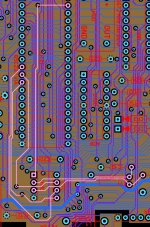fehervaria
New member
@Kai Robinson It is very amazing project! I love to see how you go through on each reversengineer's problems and do beautifull job at the end. :beige:
Do you plan to rebuild the Macintosh SE "only" at Logic Board level, or are you planning for the Analog Board too? Or the Magical Miniscribe 8425SA harddisk, what was the original for that SEs?
Do you plan to rebuild the Macintosh SE "only" at Logic Board level, or are you planning for the Analog Board too? Or the Magical Miniscribe 8425SA harddisk, what was the original for that SEs?

